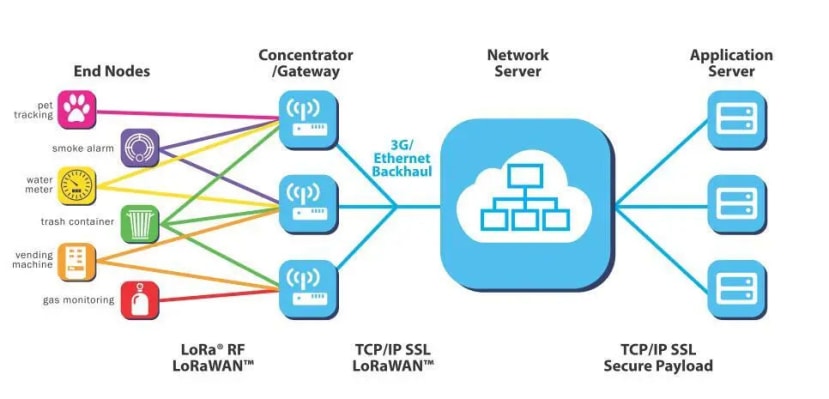The Interactive Air Quality Map: Vlog 5 - Setting up a Network
Follow articleHow do you feel about this article? Help us to provide better content for you.
Thank you! Your feedback has been received.
There was a problem submitting your feedback, please try again later.
What do you think of this article?
In my previous article, I mentioned the solution of replacing a LoRaWAN module with a custom GSM board in the mini PCIe form factor to overcome the limitation of LoRa communication in my country. This alternative approach works because of how the LoRaWAN network works.
A typical LoRaWAN network comprises three main components: end nodes (sensors or devices), gateways, and a network server. LoRa, short for "Long Range," refers to the communication method employed between the end nodes and gateways. In the context of the interactive air quality map project, the end nodes are representing the mobile air quality loggers. Ideally, these loggers would incorporate a radio capable of transmitting data using commonly adopted long-range frequencies such as 433MHz, 868MHz, or 915MHz. A gateway, acting as a receiver, captures the LoRaWAN signals transmitted by the end nodes and forwards them to the network server. Gateways typically possess multiple channels, enabling them to cover extensive areas. The network server assumes the role of managing gateways, authenticating end devices, storing data, and routing it to the intended applications. In my specific case, the data from the loggers would be utilized in various outlets, including the physical interactive air quality map.
It is important to note that LoRa primarily enables the connection between the logger and the gateway, and contrary to its name, this initial connection can be established using different communication methods depending on the specific project requirements. In the case of the interactive air quality map, my requirements are achieving long-range communication (greater than 7km), minimizing power consumption, and ensuring cost-effectiveness. This is precisely why a LoRa-based network perfectly aligns with the project's needs. However, given the current unavailability of LoRa as an option in Nigeria, GSM communication becomes the most suitable alternative, offering comparable advantages in terms of long-range capabilities, not so much for power efficiency, and cost-effectiveness though.
Follow Ahmed's weekly progress in developing the Interactive Air Quality Map 2.0 across Lagos.



Comments